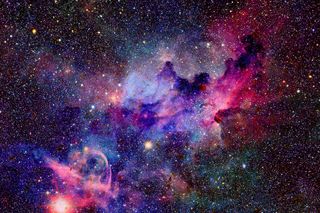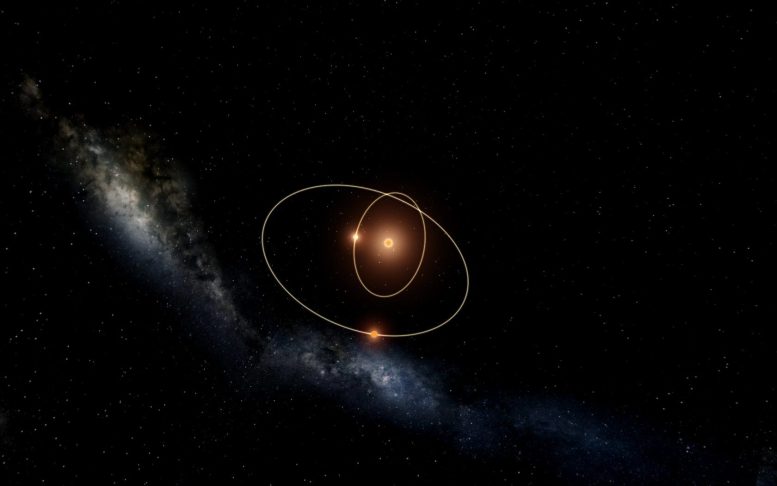A wild new theory suggests there may be another "anti-universe," running backward in time prior to the Big Bang. The idea assumes that the early universe was small, hot and dense — and so uniform that time looks symmetric going backward and forward.
If true, the new
theory means that
dark matter isn't so mysterious; it's just a new flavor of a ghostly particle called a
neutrino that can only exist in this kind of universe. And the theory implies there would be no need for a period of "inflation" that rapidly expanded the size of the young cosmos soon after the Big Bang.
If true, then future experiments to hunt for gravitational waves, or to pin down the mass of neutrinos, could answer once and for all whether this mirror anti-universe exists.
Preserving symmetryPhysicists have identified a set of fundamental symmetries in nature. The three most important symmetries are: charge (if you flip the charges of all the particles involved in an interaction to their opposite charge, you'll get the same interaction); parity (if you look at the mirror image of an interaction, you get the same result); and time (if you run an interaction backward in time, it looks the same).
Physical interactions obey most of these symmetries most of the time, which means that there are sometimes violations. But physicists have never observed a violation of a combination of all three symmetries at the same time. If you take every single interaction observed in nature and flip the charges, take the mirror image, and run it backward in time, those interactions behave exactly the same.
This fundamental symmetry is given a name: CPT symmetry, for charge (C), parity (P) and time (T).
In a
new paper recently accepted for publication in the journal Annals of Physics, scientists propose extending this combined symmetry. Usually this symmetry only applies to interactions — the forces and fields that make up the physics of the cosmos. But perhaps, if this is such an incredibly important symmetry, it applies to the whole entire universe itself. In other words, this idea extends this symmetry from applying to just the "actors" of the universe (forces and fields) to the "stage" itself, the entire physical object of the universe.
Creating dark matterWe live in an expanding universe. This universe is filled with lots of particles doing lots of interesting things, and the evolution of the universe moves forward in time. If we extend the concept of CPT symmetry to our entire cosmos, then our view of the universe can't be the entire picture.
Instead, there must be more. To preserve the CPT symmetry throughout the cosmos, there must be a mirror-image cosmos that balances out our own. This cosmos would have all opposite charges than we have, be flipped in the mirror, and run backward in time. Our universe is just one of a twin. Taken together, the two universes obey CPT symmetry.
The study researchers next asked what the consequences of such a universe would be. They found many wonderful things.
READ MORE...




















